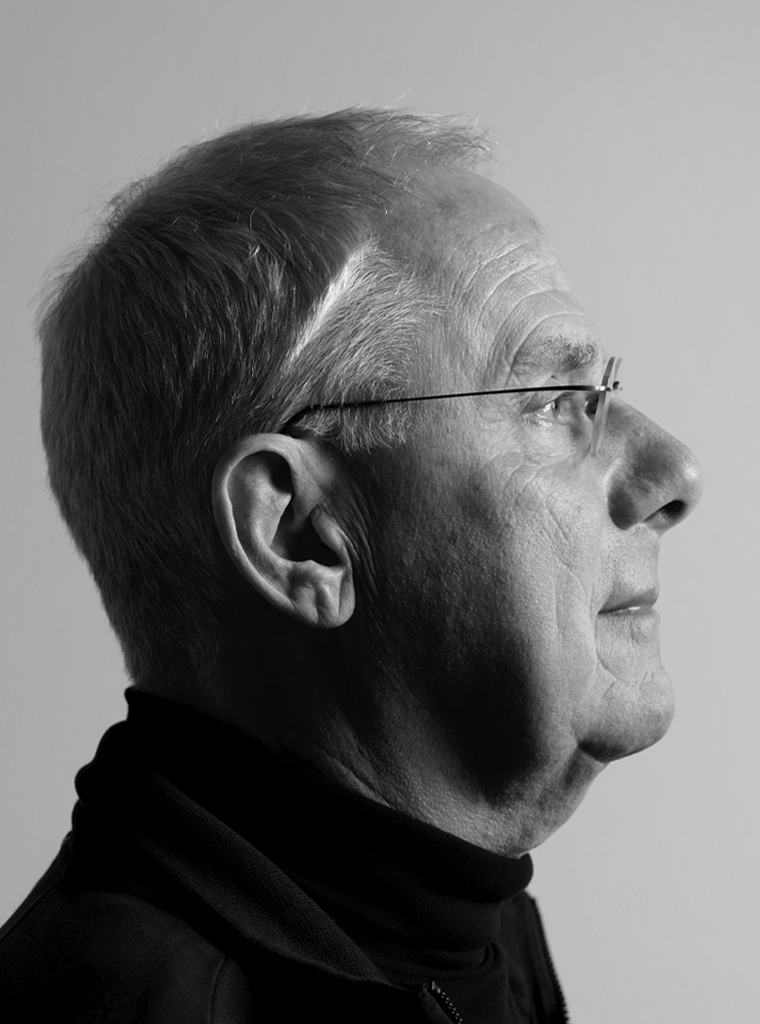Rob Huisman: “I am passionate admirer of the design profession, notwithstanding having been an outsider all the time. This is what I feel. I deliberately chose for this position, from where I can show the profession the mirror image of its true being. I believe this is BNO’s power. Its bureau has the same attitude. They are independent minds.”
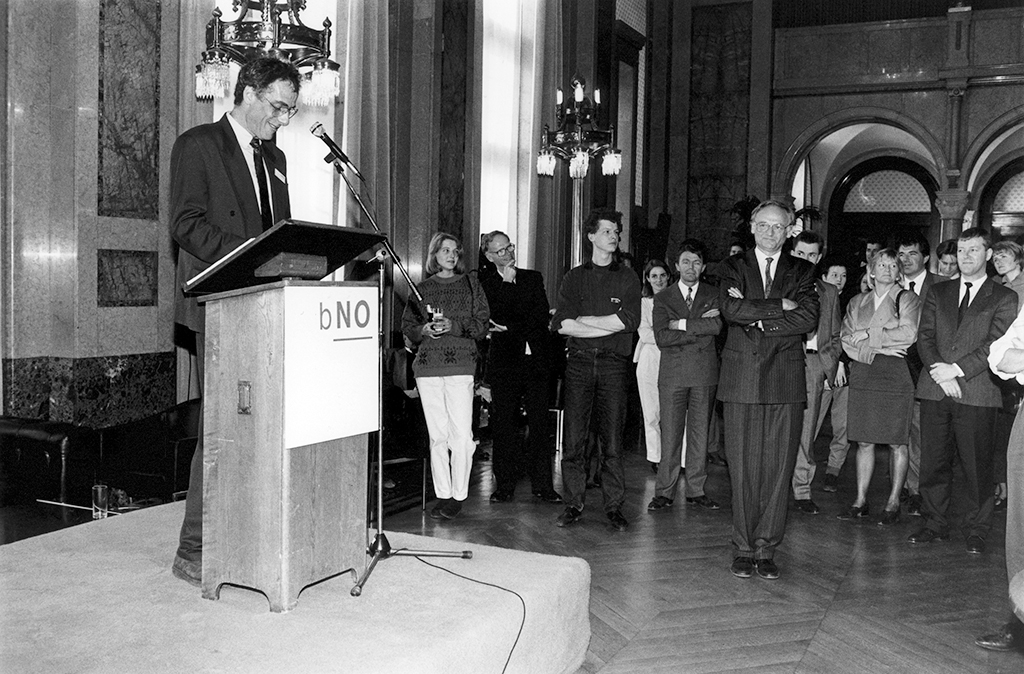
Digital footprint
On April 25, 2013, the digitalized archives of BNO (Association of Dutch Designers) were presented to the Rijksdienst voor Kunsthistorische Documentatie RKD (Netherlands Institute for Art History) in The Hague during a celebratory meeting. All documents produced by BNO and its predecessors (GVN, KIO, KIO Branche, NIC, BVV, bNO) were collected, sorted and digitalized. These archives provide a fascinating view of the history of the organized design profession from 1969 to 2004. The presentation at RKD coincided with Rob Huisman taking leave as the director of BNO. This meeting was his idea, because he wanted to leave behind something relevant to the history of the profession and his own history at BNO: a digital footprint. Huisman had been the face fronting BNO and its predecessors for 26 years and 7 months. He didn’t merely keep the organization on target, but set out its course as well. Board members came and went. Stability is an essential quality of any organization’s central bureau and all these years Huisman clearly enjoyed offering his stable leadership, his expertise and, not to forget, his enthusiasm.
Designers in congress
It was 1904, more than a century ago, that the first organization of professional designers was founded: VANK, the Vereniging voor Ambachts- en Nijverheidskunst (Association for arts and crafts). Much later, during WW II, the federation of artists’ associations was disbanded by order of the German occupier, because its member-organizations refused to join the German ‘Kulturkammer’. Immediately, plans were made for a new federation as soon as the war ended. And so it happened. It fought for the legality of a Raad voor de Kunst (National art council), which eventually became a great influencer of Dutch art policy in the postwar years. GKf (in which applied art professionals were united) was one of the federation’s member organizations; it was divided in sections, including one for graphic designers and illustrators. In 1952, KIO was founded for industrial designers; some GKf members also signed up, but, discontented, left soon to form NIDf (Industrial designers federation), which eventually stopped to exist.
GKf was located in Amsterdam. Meanwhile, in The Hague a collective was established by advertising designers and illustrators, called VRI. Both VRI and GKf voted on new member admissions and both associated with Icograda, the International Council of Graphic Design Associations. After heated discussions, GKf and VRI merged in 1968 to form GVN, Grafisch Vormgevers Nederland (Dutch Graphic Designers). The new organization had sixteen sub-committees and regional circles, they published recommended fees, arranged for exhibitions in the new wing of Amsterdam’s Stedelijk Museum, established wage standards for designers in salaried employment, fought for copyright rules, and, in 1973, published GVN’s first illustrated membership register in collaboration with photographers from GKf.
Rob Huisman, GVN general secretary
In October 1986, Rob Huisman succeeded Jantien Peeters and became GVN’s general secretary after applications had been heard by a committee of which Jelle van der Toorn Vrijthoff, Simon den Hartog and Jantien Peeters were core members.
Rob Huisman (1948) was born in Hilversum and lived there until graduating from high school. He refused to serve as a conscript in the military and was convicted to enter the military penal camp at Nieuwersluis. After his appeal was rejected, he decided to join the army after all, “to spend a pointless but in the end not unpleasant couple of months.” Free at last, he decided to enter a more revolutionary’ period and to study sociology at the University of Amsterdam. In those days, Marxist thinking was appealing to him and many others. Sociology was not his real forte, he was stronger in math and physics; as a student he made money by working different jobs including at PTT’s intercontinental communications center. His enthusiasm for Marxism disappeared quickly and he added classes in criminology and psychiatry to sociology. By the time graduation was on the horizon, he was quite mesmerized by art sociology as taught by Wim Zweers: how to look at art from different philosophical perspectives. For example, how do you study art from the point of view of functionalism, or structuralism? Approaching subjects or situations from different perspectives would be his approach throughout his whole career at BNO.
During his years at the university, Huisman married Marijke Paul. Two daughters were born and their father took care of them while their mother went to work; as a student, he had plenty of time. An internship at the Boekman foundation was his first serious job; they were executing a research project for the City of Amsterdam’s art council. For six months, he had to attend all performances in gallery De Appel, who engaged artists such as Ulay and Abramowic as well as Hermann Nitsch, who presented his bloody body art. A new world opened up. His interviews of members of the audience were entered in a recommendation that said De Appel was an important asset to the city’s art scene, deserved its subsidy, and should continue its work as a performance gallery.
In 1979, Huisman joined the Zuid-Holland cultural council, which received some of the government funds that in previous years had been awarded to beginning artists. He was in a position to award good amounts of money to art projects such as Golfbreker and the first Zuid-Holland art fair.
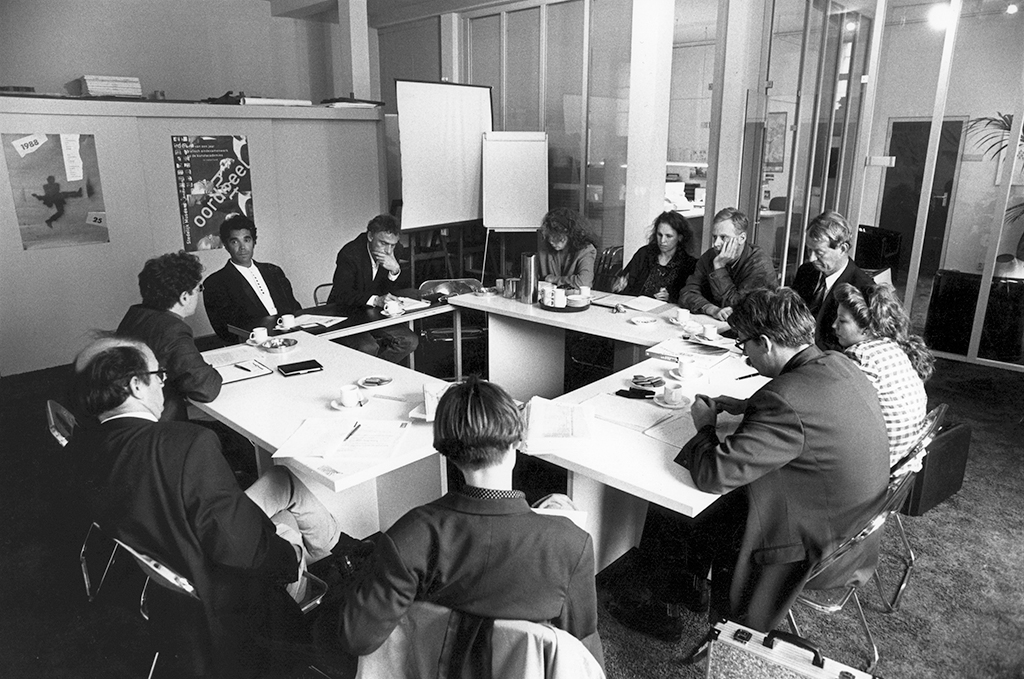
GVN to BNO
On his first day at GVN, Rob Huisman stumbled across several unpacked moving boxes. GVN had just moved from its Amstel office to the Arsenaal building at Waterlooplein. GVN had 554 members and 81 student-members. The reigning board didn’t know what to think of Rob Huisman. His own first impression was: this organization isn’t about anything, yet their board wants to have a say in everything. Two-thousand copies of the new illustrated membership register designed by Bart Oosterhoorn arrived and no one had any idea about distribution.
Huisman had no clue of the world of Dutch design. The international congress Design ’87 at RAI Amsterdam provided him with all the opportunities he needed to get acquainted with the profession and its practitioners. Other introductions were the exhibitions Holland in Vorm, a unique collaboration of museums in Amsterdam, Rotterdam, Utrecht, Arnhem and The Hague. Amsterdam’s Stedelijk Museum once again took the lead by organizing Grafische Vormgeving na 1945 (Graphic design after 1945), and the Icograda congress also took place in Amsterdam. Nico Spelbrink was elected to the Icograda chair. A new GVN study group connected to Icograda. In 1987, GVN and BNI (association of interior architects) organized a joint new year’s reception during which Ton Limburg introduced his book In een zwart gat (Entering a black hole), a beginning designer’s manual. In the new wing of the Stedelijk Museum a GVN exhibition about Tekst en beeld (Text and image) was organized, designed by students from Eindhoven’s design academy.
Meanwhile, discussions took place about the formation of a new design association. The large agencies Keja Donia and Visser Bay Anders Toscani (VBAT) took the initiative. Within GVN, members such as Studio Henk de Vries, BRS Premsela Vonk, Studio 124 (Eelco Bos), and Studio Gert Dumbar were discussing the representation of agencies in the association. They reached out to the other group to join GVN. Huisman discussed all these developments with a steering committee. They envisioned a wider set-up of their organization to represent not only individual graphic designers but agencies as well. An multidisciplinary approach should be adopted, reflecting the increasingly multidisciplinary nature of the agencies.
November 1987. A proposal for GVN’s new structure was accepted by the members. The board received the green light to develop a proposal for an association of individual designers and design agencies. In October 1988, the general assembly voted in favor of the proposal. They also voted for a new name for their professional organization: bNO (beroepsvereniging Nederlandse Ontwerpers). There would be two sections and two presidents as well as a general board with a general president. Guus Ros was chosen to do the job. In 1988, bNO counted 825 individual members, 130 student-members and 52 agency members.
Guus Ros, chair, 1986-1990: Rob and I came to GVN at the same time, Rob as its general secretary. It were exciting and rewarding years, during which we managed to prevent the schism of the design agencies; luckily they decided to remain within GVN. In 1988, the GVN became bNO and we invited all of Dutch design to join. By the time I stepped back as chairman, in 1990, Rob was bNO’s director, the job he held for 27 plus years, and I thank him for doing so.
Rita van Hattum joined BNO’s bureau in 1988, forming a strong team with Rob Huisman, with Rob’s easy-going approach and Rita’s eye on details. Their long collaboration ensured the bureau’s continuity, creativity and energy. The new organizational structure allowed many new initiatives to be brought forward. The bi-annual Piet Zwart Award, originally an initiative of Total Design, was adopted; in 1988, Wim Crouwel was the first recipient.
Having become acquainted with the design sector, Rob Huisman was ready to become the bNO’s driving force. He proved to be an unconventional leader, appreciative of a little blow now and then. An Apple Macintosh arrived in 1989 and with it Filemaker Pro to replace the membership index box. The new media would have Rob Huisman’s special attention for a long time to come; in 1995/1996, bNO established an elaborate website for member services. The bureau staff grew, with Vincent van den Eijnde to provide free legal advice for members. Together with BIS publishers a concept was developed for the Dutch Design Series: starting in 1990, every other year a new compendium would be published presenting work of members. Karin Kerremans designed the first edition during her internship at Total Design. Books such as these proved to be a great success internationally. Huisman: “I learned that Korean families gave a must-have copy to their design student children.” The book series were a financial success, too. BIS and bNO decided to stop publishing in 2010 – digital communication had taken over.
1990. Eugene Bay succeeded Guus Ros as general chairperson. It was the year during which WVC, the Dutch ministry of cultural affairs, after a strong lobby by bNO and other associations of artists and designers, came forward with their vision of a national design institute. The organizations had expected support by the ministry of economic affairs, too; bNO especially had pushed for their collaboration and continued to express the view that culture and economy are allies, not rivals. Rob Huisman played an important role in the development of the plans. He also had a hand in the establishment of the Dutch Form foundation as a placeholder for the future institute (with Marjan Unger as director).
Eugene Bay, chair, 1990-1995:
Rob Huisman, the builder who was often diplomatically incorrect.
Man with a fine memory and the laid-back son of the trippy 60s. Selfless white knight, who always fought for the inexperienced underdog. The perfect lobbyist, but the worst diplomat. The epitome of relaxed casual yet the cliché crumpled professor. Tolerant to the point of anything goes, but intolerant of intolerance. Politically unpolitical; and yet socially sensitive.
Holding and shipping a tiny glass of white wine at receptions always the man for a party. Loud bursts of laughter erupt from his quiet composure-often when least expected. The solid backbone of the organization never aspiring to be its ceremonial head. A true survivor amidst a sea of shifting alliances but a man with immovable viewpoint. Like a missionary, he served us ceaselessly, tirelessly and always with intensity. The endless evolution and migrations of the organization have never derailed his passion.
Without Rob the BNO will lose its glue and part of its unique DNA.
The void will no doubt be filled but ‘our’ Rob will never be replaced.
Hans Bockting, chair, 1995-1996: 1995-1996, a transitional period. bNO becomes BNO, representing graphic designers, illustrators, industrial designers, and interior designers. A new member category is formed by the larger design agencies, with their own issues and problems. Professionalizing remains the keyword. What I remember is how Rob at all times continued to fight for the individual designer, whether student, starter, or established professional. He had a sharp eye for their weak position. Slavery was abolished 150 years ago in the Netherlands – today we have flexible labor…
The general assembly of 1991 took up a discussion that had been started earlier by Gert Dumbar and Hans Bockting, about the membership position of the so-called ‘marketing-oriented agencies’ and, in line with this issue, the changing mentality within bNO. The discussion accumulated later in the year in a heated dispute in a public meeting, during which it became clear that many members did not agree with the tendentious way the subject was presented and how a specific group of member-agencies was put under pressure.
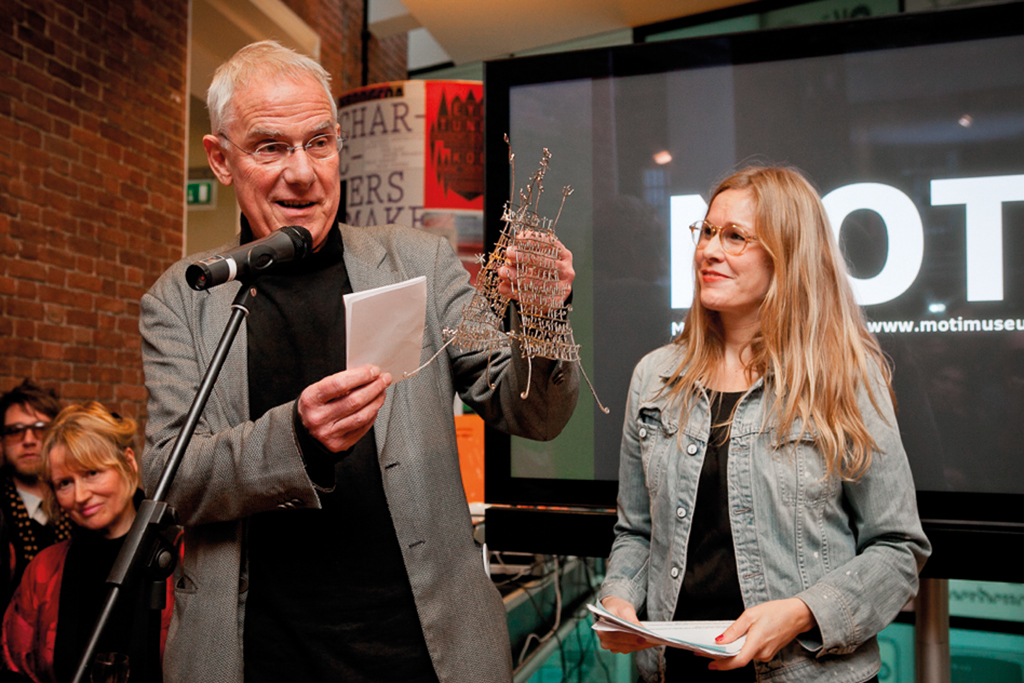
bNO to BNO
Also in 1991, the first of what would become a series of creative sector surveys was completed by the University of Amsterdam’s Economic Development group (SEO). This report provided the boards of bNO, KIO and BNI with insight into the economic positions of individual designers, design agencies, and their clients. SEO came with recommendations: better information for clients, more acquisition, strengthening of competition, improvement of professionality. What the report also indicated was that the three existing associations would do better to amalgamate and become one strong union of creative professionals. A joint workgroup developed a proposal for a new organization. BNI (interior architects) withdrew eventually. “They preferred to continue the status of architect and their registration in the Register of Architects.” This situation didn’t change much, even though many interior designers eventually decided to join the new multidisciplinary organization.
In 1992, Rob Huisman and Ben Bos were among the founders of the Nederlands Archief Grafisch Ontwerp (NAGO), which aimed to arrange for the conservation and opening of the archives of important Dutch designers. Another initiative, taken by legal advisor Vincent van den Eijnde, resulted in the foundation of SCRIO, which was to protect the collective copyrights of designers and illustrators; in 2008, SCRIO and other copyright protectors merged into Pictoright. Rob Huisman became a board member and Vincent van den Eijnde left BNO to become SCRIO’s and later Pictoright’s director. From then on, each year some 7 million euro of collective copyrights were cashed in and payed out to designers and illustrators; and €200,000 were contributed to initiatives important to the profession, such as NAGO and ‘Best Designed Books’. The spot Vincent van den Eijnde left empty at the BNO bureau was filled by Anouk Siegelaar.
In 1993, John Thackara, the British director of the Vormgevingsinstituut (Netherlands Design Institute), organized the conference Doors of Perception about the influence and the importance of internet and the new media. Rob Huisman, an immediate fan, soon discovered that Thackara was much less interested in the other tasks delegated to the institute. In the following years it lost the support of its constituency and ultimately, in 2000, the government’s financial support.
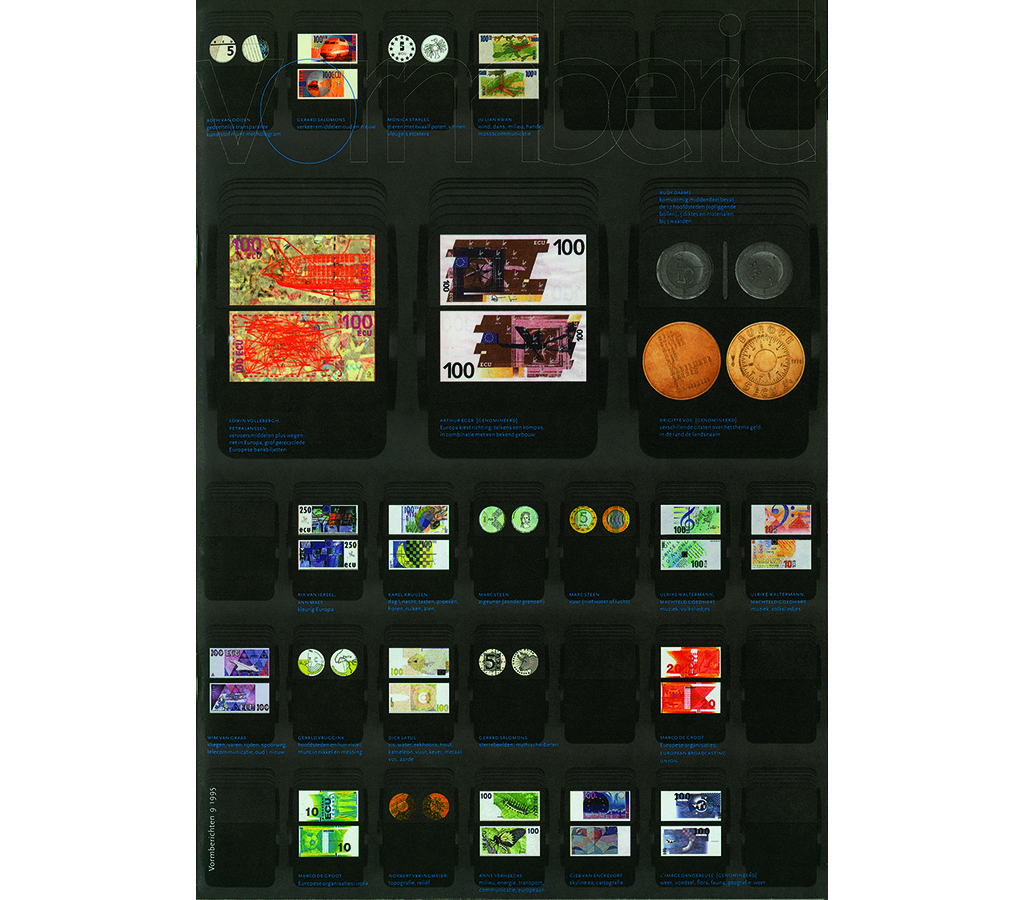
It was 1995 before the proposal for a new structure came to the table at the bNO general assembly. KIO and KIO Branche representatives were invited as well. Hans Bockting succeeded Eugene Bay as chairman. In 1996, the new organization, named BNO in all capital letters, became a fact with Wim Crouwel as chair of the supervising board. Three sections were formed: graphic design, industrial design and environmental design; and circles for individual members and member-agencies were established as well. The BNO bureau moved from the Arsenaal building to the Weesperflat at Wibautstraat. The new BNO and its bureau experienced no dull moments. Scores of events, publications, training sessions, circle meetings, and meetings with students were organized; many initiatives were taken and relations with several government departments and international partners were established or strengthened. Vormberichten, BNO’s newsletter, grew into a proper magazine.
Wim Crouwel, chair, 1996-1998: Rob was BNO. A dedicated director for 27 years. He appeared to effortlessly steer the growing organization of individualistic designers that came about after fusions of previous organizations and from new initiatives. In the beginning an outsider, he had to make sense of all the issues that colored, and moved, the members of the different professions; it took him no trouble. Later, I worked with Rob in many boards and I must say: he was the least ‘directing’ of all directors I have known.
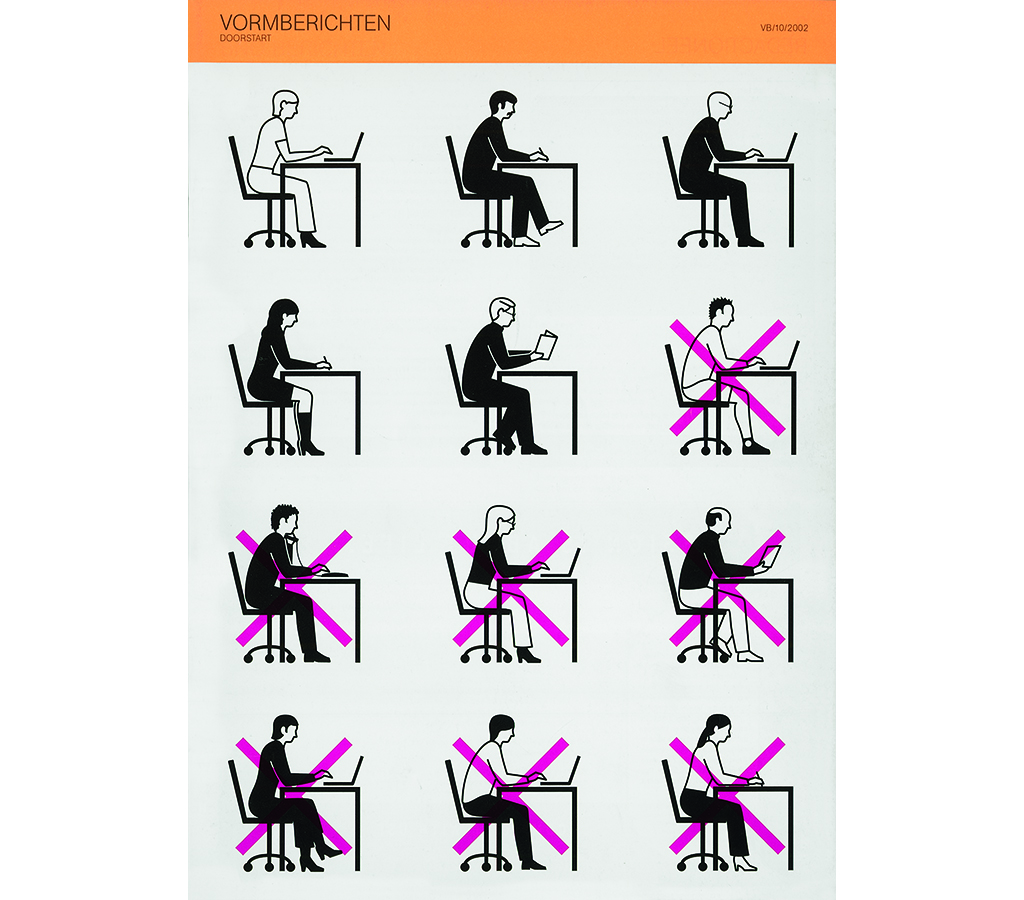
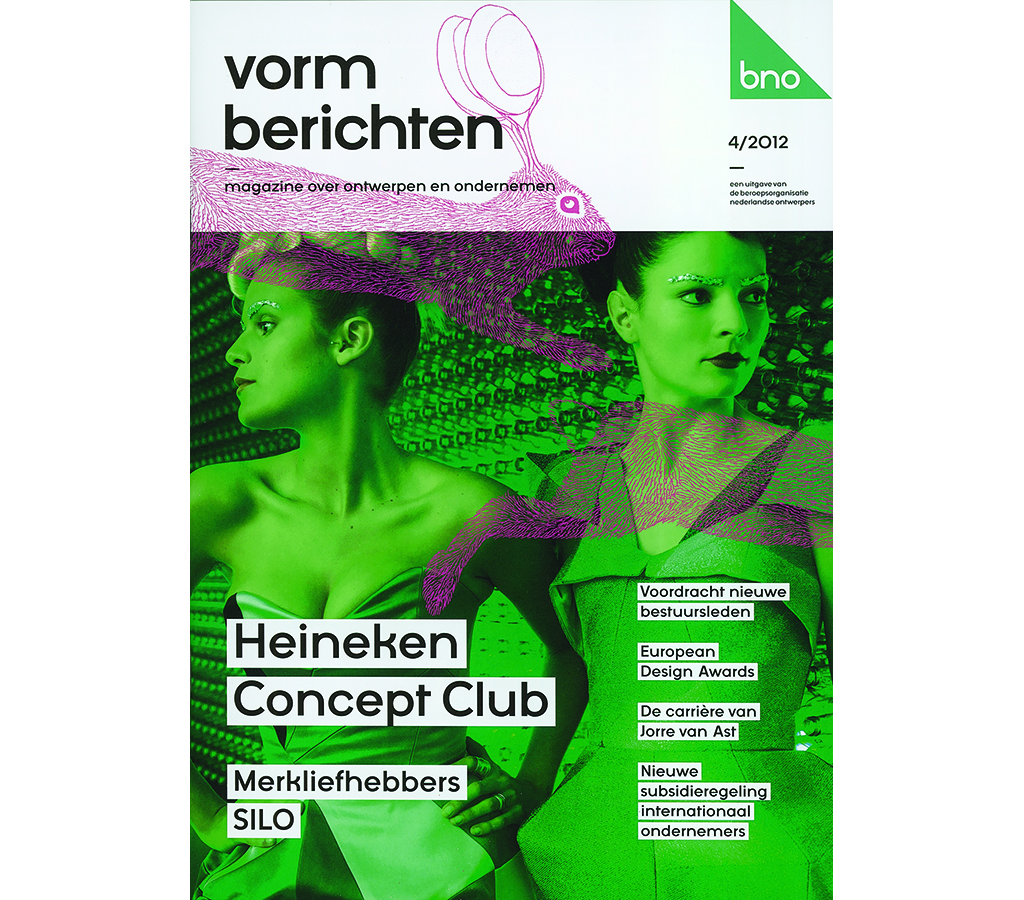
BNO began to play a more active role in international forums such as Icograda, Icsid and Beda, World Crafts Council and European Illustrators Forum. Beda (Bureau of European Design Associations) in Brussels as an umbrella organization strived to promote a European design policy within the EU that would benefit the BNO and its members. BNO (and especially Eugene Bay and Rob Huisman) worked hard to reform and professionalize Beda and to collect the support of other national design organizations. Not all efforts to integrate international actions were successful, though. A collaboration of Icsid, Icograda and IFI was rejected.
More successful was the BNO graphic design event Mind the Gap (Paradiso, Amsterdam, 1996); it was repeated four times in following years. Also of importance was the Dutch illustrators’ professional organization NIC deciding to join BNO (in 1998) with all its 350 members. Later, the members of BVV (association of craft related designers) also decided to follow. The BNO’s growth never seemed to overwhelm Rob Huisman. On the contrary, he appeared to weather all storms and to stand strong, even while balancing complicated management acts and dealing with many divergent or even controversial opinions pressed forward from within the different professions and their constituencies. His style of management allowed his staff to use their talents efficiently and to develop professionally.
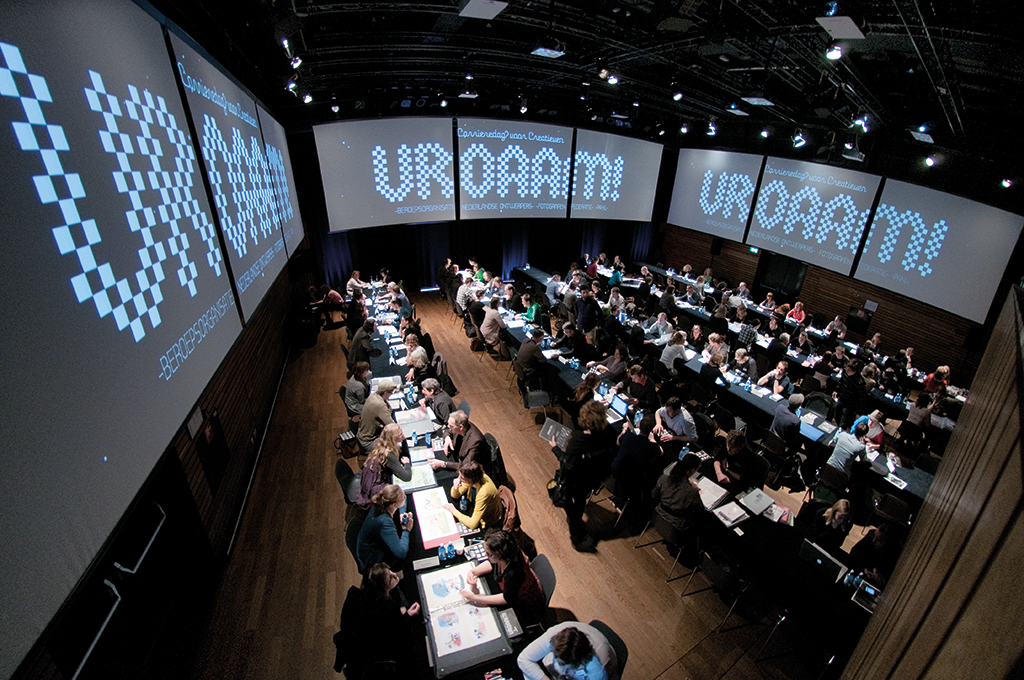
Real progress
By 2000, BNO had 2184 members: 1599 individual members, 69 students, 169 member-agencies. It was a remarkably profitable year for Dutch design, with sales growing up to 25%. BNO continued to publish its Branchemonitor, the contents of which for years delivered proof of a positive growth. Lex Donia, BNO’s new chairman, looked at the organizational structure that was introduced in 1996 and concluded the organization should shed off a few rather bureaucratic tendencies and create better connections with what was developing in the professional field. In 2001, an improved, slimmed down structure was accepted. BNO continued with its board and its general assembly as the only decision makers and the bureau as its executive. Within the association ‘platforms’ were tasked with different activities, or to bundle members with matching visions or kindred ideas. As Rob Huisman wrote, the change was more than a structural adjustment: this was all about a change of mentality. BNO had to act faster and look outward rather than inward.
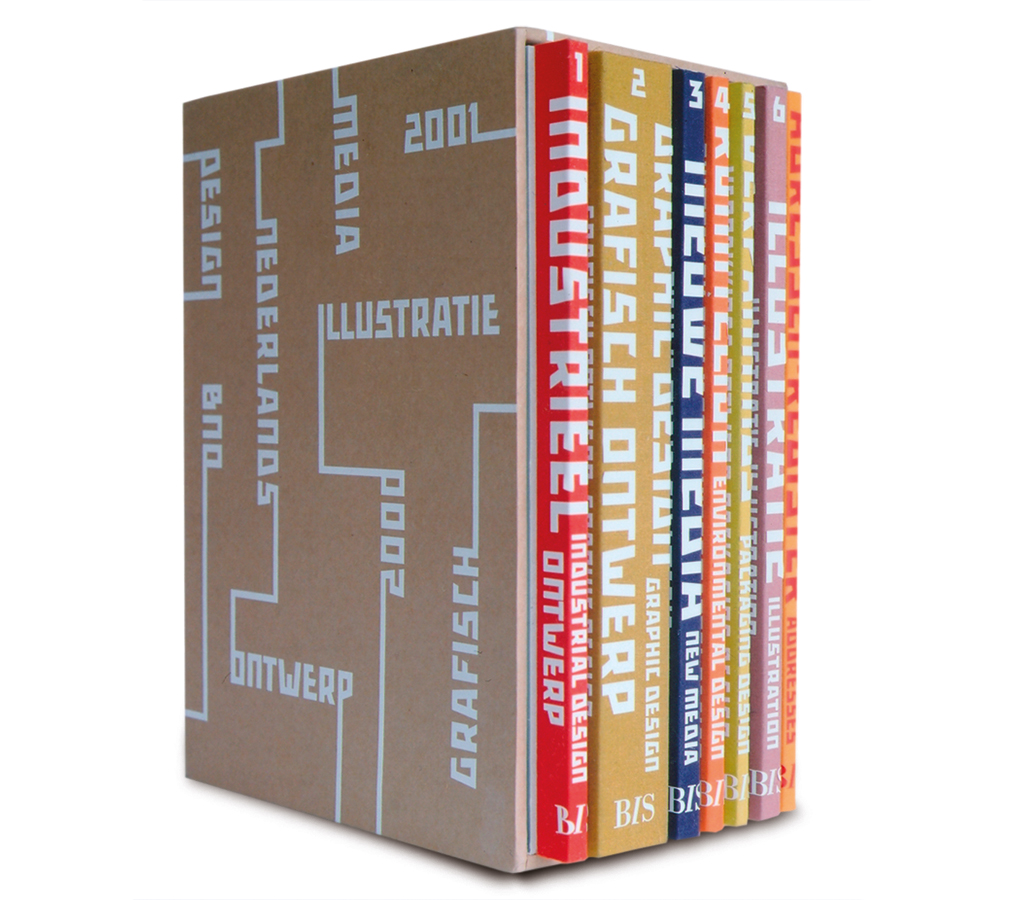
BNO contacted the Dutch government’s department of economic affairs to discuss efforts to improve the position of the Dutch creative industries. In six different regional ‘circles’, BNO members met on a regular basis to discuss events and initiatives. The 2001 annual report lists a long list of initiatives and activities. Rob Huisman wrote about the priorities to be given to BNO’s positioning: better communication, a stronger connection between education and professional reality, attraction of new members, collaboration with other professional organizations, research and academic exploration.
Lex Donia, chair, 1998-2001: I first met Rob in 1987 or 1988. I was representing a group of design agencies that wanted to associate. He represented GVN, which did not allow agencies to become members but thought it unthinkable that we would create our own organization. Rob wouldn’t allow it to happen and it was his doing that the GVN changed its rules. bNO was established with two membership sectors: of individual members and member-agencies. This was the beginning of the ‘coming-out’ of design in the Netherlands and of our enormously successful professional design organization.
Peter Kersten, chair, 2001-2006: Rob managed to convince me I should be Lex Donia’s successor. It was one of his great qualities: convincing people to join something. Something that would always turn out to be immensely valuable for BNO. Rob is a director any association would dream of. Solidary. Creating good connections within the organization as well as to the outside world. Always searching for organizational improvements, always giving new, but also old, ideas a chance. A great mixture of laissez faire and decisiveness, never forgetting that he, as the director, had the final say and responsibility. BNO became one of the most successful professional design organizations in the world, thanks to Rob. And we became good friends in the process.
In 2001, Rob Huisman and Gerbrand Bas (Designlink) took the initiative to found Dutch Design Awards, a serious award festival celebrating the quality of Dutch design. Peter Kersten succeeded Lex Donia in the BNO chair and with him came entry to his advanced international network. In 2003, Premsela foundation succeeded the defunct Vormgeversinstituut; networking was to be its main task. Peter Kersten described the differences between BNO and Premsela in Adformatie as follows: “Premsela opts for a cultural starting point, while we have an economic perspective.” He advocated the establishment of a design institute comparable to the British Design Council. In 2005, it was Tom Dorresteijn who took over from Peter Kersten, at a time of continuing economic bloom.
Tom Dorresteijn, chair, 2006-2012: Rob, man of the BNO house.
Scene 1: Sometime in the 1980s. I had never heard about BNO. Designer Joris Funcke told me what it was. He invited me to attend a meeting. I enjoyed the atmosphere. The professional ‘couple’ Rob and Rita. Warm, relaxed, driven.
Scene 2: Early 2012. Rob is rocking it with his electric guitar. I am playing the drums at BNO’s general assembly. Playing along came automatically. Guitar player and drummer connect. Symbolical?
Scene 3: 2008 or 2009. A thundering discussion after a board meeting. The moment we learn to really understand our characters and motives; the beginning of a deep trust.
Scene 4: 2013. “So, he was very lucky,” says Rita when I call to hear what is going on at BNO. She tells me Rob has been in surgery, that very day, to receive a by-pass. Symbolical?
ROB and BNO, a one letter difference, almost synonyms. One body, one soul. Maybe it’s no coincidence that they both underwent heart treatment. Very unpleasant but necessary for better future prospectives.
Rob, I admire your never-ending passion for the BNO and its professionals. Your vigilance and independence in a world full of contrasting and conflicting interests and personalities kept BNO safe. And you are a damn nice guy to boot.
The BNO bureau had grown explosively in the years before 2007, prompting a move from Wibautstraat to a larger office space at Danzigerkade. The opportunity to take over activities from BIS publishers in 2008 led to a fundamental discussion between the board and staff members. Should BNO develop more commercial activities and if so, should BNO found a limited liability company to handle them? Rob Huisman sometimes felt his own position was being questioned. Many of the issues raised were relevant, but the tone being set by the involvement of an outside consultant didn’t feel good. “A painful but useful exercise.” In the end, Rob Huisman and Anouk Siegelaar wrote down the outcomes in a policy for the future: Redesigning BNO. Focus on quality.
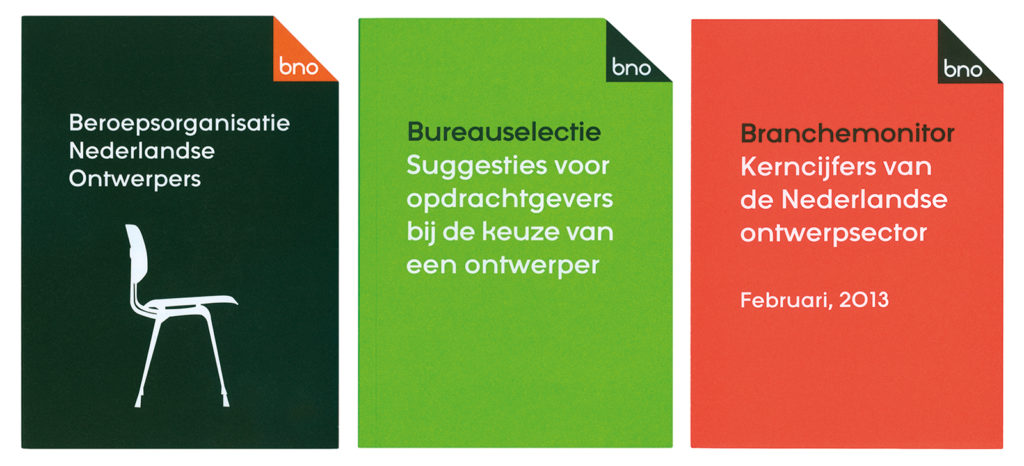
Meanwhile, the international activities had accumulated and were given an extra stimulus through Dutch Design Fashion and Architecture (Dutch DFA), a program that was started in 2009 to promote the nation’s creative services across its borders. The focus was on Germany, India, China and later also Turkey. The Dutch government donated three million euro a year, for four consecutive years. The departments of economic affairs and OCW (Education, culture and science) presented a joint plan: The Value of Creation. Also, a federation Dutch Creative Industries was established, an initiative of BNO and Designlink. Rob Huisman was elected to be its first chairman. Innovation being pushed actively by the government created fundamentally new perspectives for the creative industries.
Timo de Rijk, chair, 2012-… : Rob came at a time when all designers, whatever their background, were defending their own positions and fighting for their individual ideas. Idealists didn’t do business with commercial designers. Graphic designers left meetings as soon as an advertising designer stepped on the rostrum. Industrial designers looked down on ‘artsy’ designers. And vice versa. None of these groups wanted to join into one larger organization. No one from one of the other organizations would be good enough to represent them, would they? Yet Rob succeeded. I will reveal you his secret. During every meeting he let it clearly be known that the other could be right too.
Farewell Rob Huisman
The world’s economic and financial crisis of 2008 seriously impacted the design sector. BNO had to take steps to remain financially healthy and strong. In 2013, BNO had 2631 individual members, 135 student-members and 137 member-agencies. In 2013, too, BNO’s new chair, Timo de Rijk, had to find a new director. Madeleine van Lennep was introduced to all members at the general assembly of February 21. She succeeded Rob Huisman on May 1, 2013.
Rob may have retired but he did not disappear from the design field. BNO will always be able to count on his expertise and advice, and the design profession on his managerial experience and knowledge.
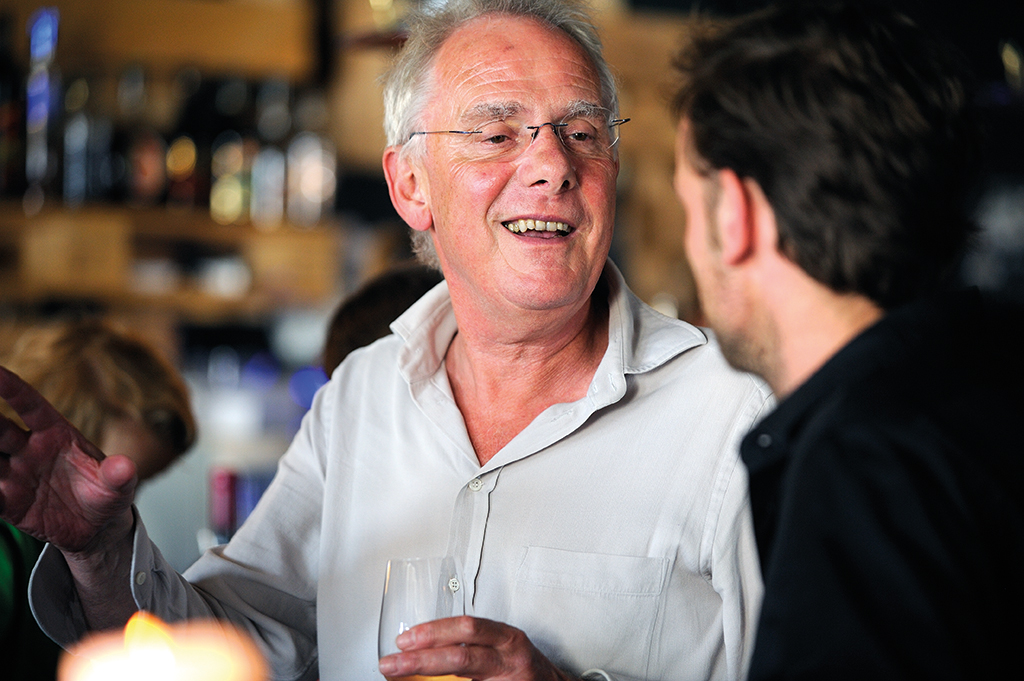
Rob Huisman
born on 24 March 1948, Hilversum
Author of the original text: Titus Yocarini, April 2013
Translation and editing in English: Ton Haak
Final editing: Sybrand Zijlstra
Portrait photo: Aatjan Renders
